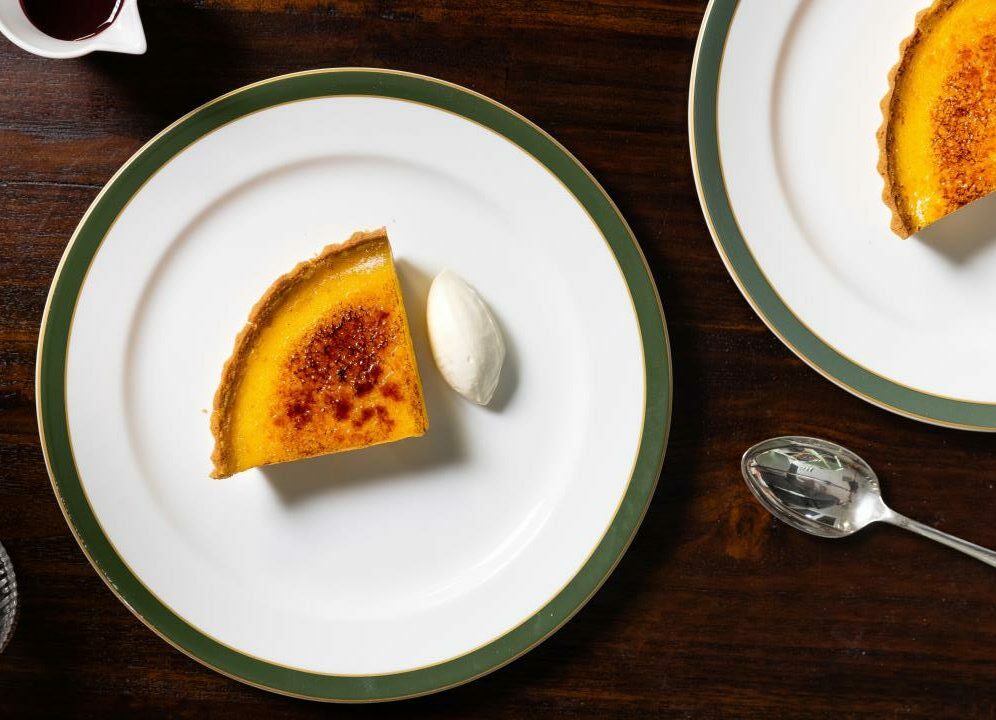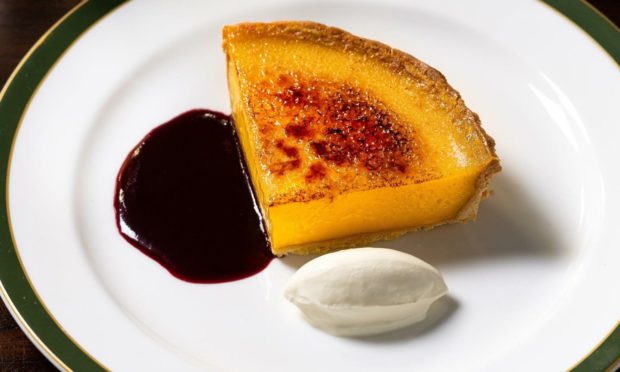For those who enjoy dessert but don’t want to indulge in anything too overly sweet, this lemon tart with creme fraiche is just the ticket.
Created by Derek Johnstone, head chef of Rusacks St Andrews, this recipe can serve up to eight people and would make a delightful dish fit for any dinner party.
Using the juice and zest of fresh lemons, Derek suggests serving this citrus and tangy dessert with a dollop or two of creme fraiche.
If you don’t fancy making your own pastry to save time, the esteemed chef has also advised that any pre-made store bought sweet pastry would also do the trick.
For more Sweet Treats inspiration be sure to check out our other recipes.
Classic lemon tart with creme fraiche
Makes 1 x 8 portion Tart

Ingredients
For the lemon tart filling:
- 4 lemons, zest and juice
- 9 eggs
- 375g caster sugar
- 300ml double cream
For the pastry: (you can also buy pre-made store bought sweet pastry instead)
- 100g caster sugar
- 100g icing sugar
- 200g soft butter
- 1 egg yolk
- 2 whole eggs
- 500g plain flour
- Pinch of salt
Method
- For the filling: Wash the lemons, zest, and juice them. Break the eggs into a bowl and add the lemon juice and zest. Beat lightly with a whisk until well blended. Add the caster sugar and double cream and mix well.
- For the pastry: Pre-heat the oven to 160C Fan/180C/400F/Gas Mark 6. Mix both sugars with the butter, add the egg yolk and the eggs, fold in the flour and salt, and mix until just combined.
- Shape into a ball and refrigerate for 1 hour. Then roll the pastry out between greaseproof paper until 1mm thick, line a 23cm fluted tart case (with a removable base) and bake the tart blind for about 30 minutes (using greaseproof and baking beans).
- Remove the baking beans then bake for a further 10 minutes. When golden, remove the pastry case from the oven and cool in the ring. Lower the temperature of the oven to 130C Fan/150C/300F/Gas Mark 2.
- Pour in lemon mix and bake for 1 hour to 1 hour 15 minutes.
- Remove from oven and leave to cool.
- Slice into portions and top with a sprinkling of caster sugar over the top of the tart. Using a kitchen blow-torch, caramelise the top till burnt and golden.
- Serve with a good spoonful creme fraiche and berries or roasted fruits as you like.
